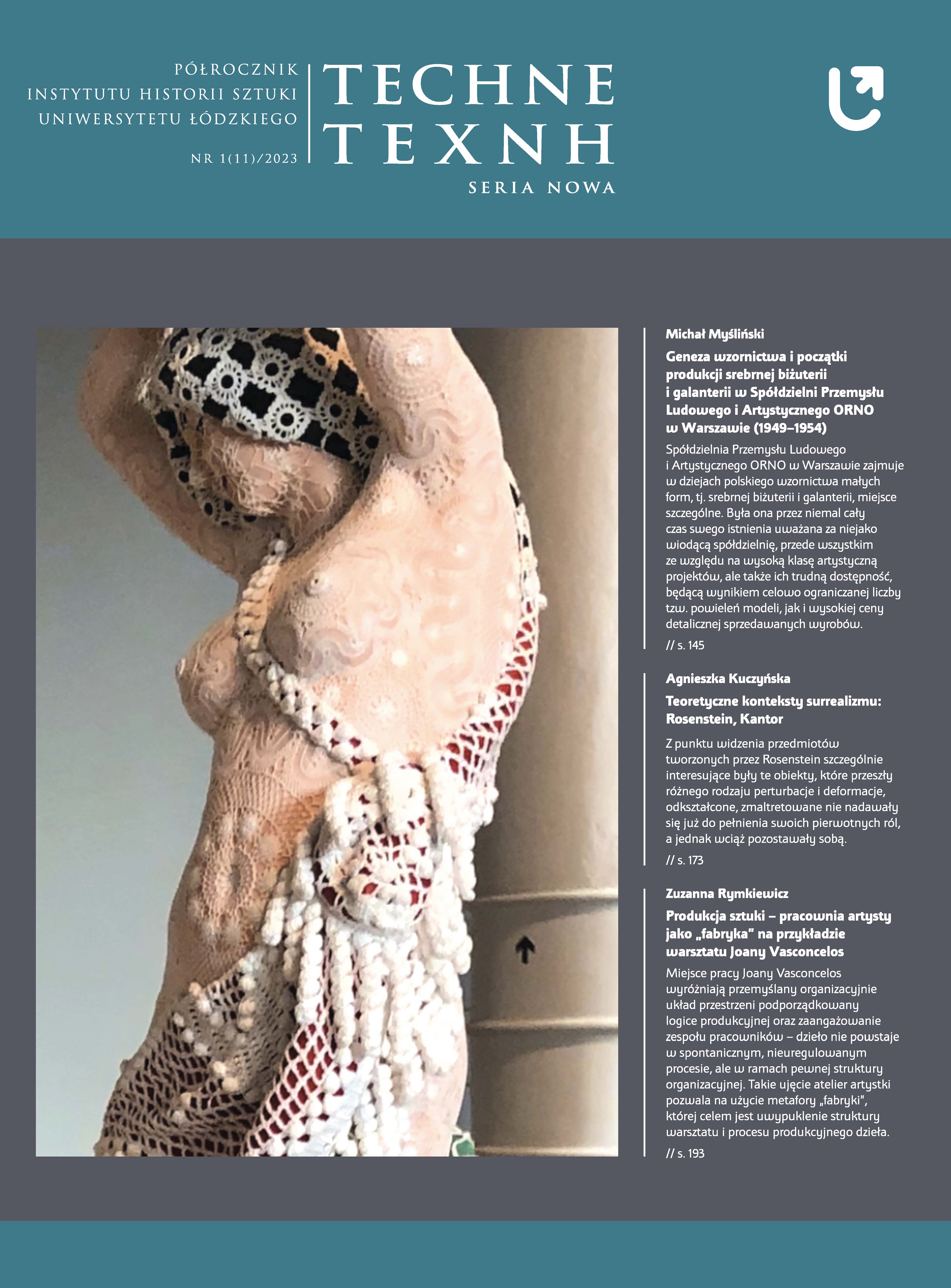Teoretyczne konteksty surrealizmu: Rosenstein, Kantor
Theoretical contexts of surrealism: Rosenstein, Kantor
Author(s): Agnieszka KuczyńskaSubject(s): Fine Arts / Performing Arts, History of Art
Published by: Wydawnictwo Uniwersytetu Łódzkiego
Keywords: surrealism; science; surrealist object; sculpture; Erna Rosenstein; Tadeusz Kantor
Summary/Abstract: The aim of this article is to supplement research on Erna Rosenstein with a new interpretive perspective. Throughout her life, the artist struggled with traumatic memories of war, tragic death of her parents and her Jewish identity. Therefore, necessarily, her work was analyzed to date in the context of the Holocaust studies. Important were also feminist readings using Bataille’s informe and accentuating biological and sexual aspect of her art. In a situation where there is not much left to discover with those tools, scientific benefits may be gained through the analysis of Rosenstein’s work in the context of her exhibition designed by Kantor at Zachęta (1967) and the theory of the surrealist object and – paradoxically – several aspects of the surrealist texts on sculpture.The objects created by Rosenstein were intentionally worn-out, assembled from damaged things, deprived of their original function. Surrealistic objects are usually interpreted as fetishes with emphasis on their inspiring influence on artists such as Louise Bourgois or Robert Gober. What is not remembered is their association not only with the urge to materialize erotic desires and complexes, but also with the need to reconstruct the way of understanding reality according to the principles suggested by modern science.Referring to the created by surrealism model of reality based on the new scientific discoveries, model undermining the belief in the unswerving stability of the world, and recalling the surrealist aversion to the tectonic allows us to recognize the connection with the surrealist sources of the metamorphic nature typical of Rosenstein’s drawings and the fragility of her objects usually looking as on the verge of disintegration. On the other hand, the surrealist theory of object and its scientific argumentation is large enough quantifier to allow also for the interpretation of the complicated spatial arrangements in Robert Matta’s paintings, which fascinated Kantor so much.The article draws attention to the importance of the text Le Crise de l’objet by André Breton, written for Exposition surréaliste d’objets [1936], which was the climax of the surrealist engagement with things, and to its connections with Le Nouvel Esprit scientifique by Gaston Bachelard. In Le Crise de l’objet Bachelard’s ”open rationality” and correction of the concept of realism were seen as necessary consequences of the discovery of non-Euclidean geometry, the theory of relativity and quantum mechanics. Breton wrote that uncritically treated sensory data had for too long been confused with the reality. The surrealist exhibition of objects proved that things remain themselves even when, for various reasons, they cease to fulfill their designed functional obligations. In this way, using objects damaged beyond recognition, objects that lost their functional affordances, surrealism argued for the value of subjectivity, of individual existence independent of its function in the social system.In this context, I recall text Surrealism written by Tadeusz Kantor (published in “Przekrój” in May 1948) as an rare recording of his views on surrealism. In this article he placed emphasis on the problems important for the theoretical perspective adopted in my texts and allowing for the new interpretation of the partnership between Kantor and Rosenstein during the exhibition in 1967. I remind of the necessity of taking into account the censorship and self-censorship in the artists’ statements during the times of the Polish People’s Republic, not only in the Stalinist era, but also later, in the rhythm of successive thaws and frosts.
Journal: TECHNE. Seria Nowa
- Issue Year: 1/2023
- Issue No: 11
- Page Range: 173-191
- Page Count: 19
- Language: Polish

